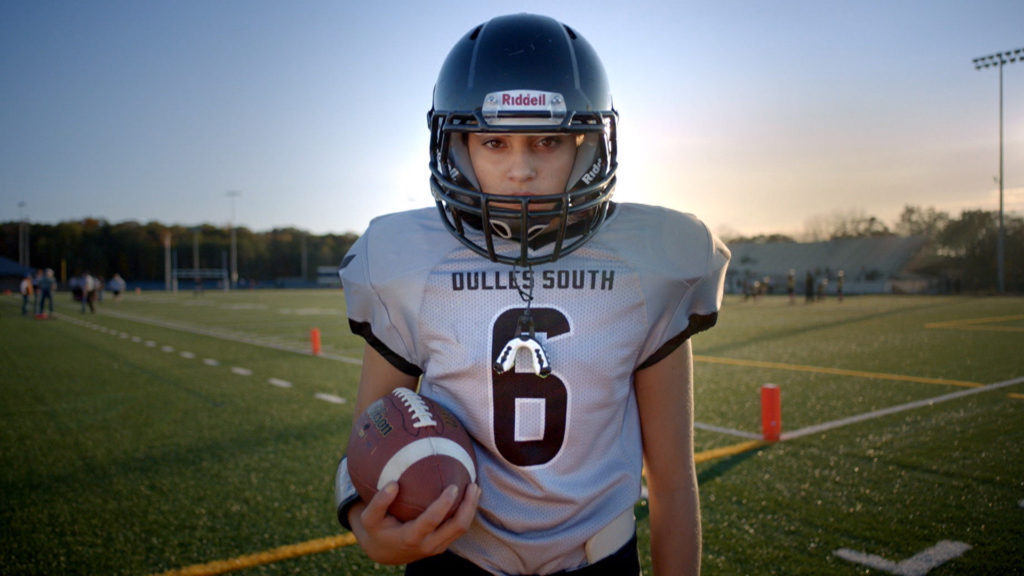| Offensive Football Positions |

Football has, by all accounts, become the undisputed king of sports in the United States. But with 22 players on the field, each with drastically varying statures and skill-sets, gaining a grasp of the roles and responsibilities of each position can present quite the challenge.
If your child is interested in giving the gridiron a try, it can be immensely beneficial for them to be provided with some exposure to a few positions of choice, relative to their own strengths.
Using the following positional breakdown as a guide, allow your child to try out multiple positions early on—preferably right in your own backyard, allowing them a low-pressure environment to get a feel for what they might like to try once the pads come on.
1 – Quarterback
The quarterback is the field general. Lined up behind or under-center, he or she is responsible for receiving the play call, relaying the call in the huddle or at the line of scrimmage and observing the defensive alignment. It is the quarterback’s job to ensure the offense is lined up correctly, just as it is their responsibility to audible out of unfavorable plays upon surveying the defense.
Then there’s playing the actual position—which requires that he or she be an excellent passer, a good athlete and one of the smartest players on the field. The quarterback handles the ball on every play, so superb ball skills are a must, even during plays that are designed hand-offs to a different player.
2 – Center
The only other player on the field guaranteed to touch the ball on every play is the center. Everything begins with this position. The center snaps the ball to a back on every play—specifically the quarterback, excluding trick plays.
The center lines up in the middle of the offensive line, between the guards. On many teams, the center bears the responsibility of shifting the line or adjusting the blocking scheme at the point of attack. Post-snap, like the rest of the offensive line, the center is responsible for blocking a defensive player.
3 – Guard
Two guards are lined up in a typical offensive formation—one on each side of the center. The guard’s job is to block on both running and passing plays. Guards are often more compact and agile, allowing them to “pull”—which means to come out of position after the snap and lead block for the ball carrier through an outside gap on a sweep, screen or trap.
It is important that a guard have a strong base and quick feet. This position is one of the most physically demanding in the sport, with extensive contact occurring on each play. For that reason, a guard should have a hardy build and a stomach for playing in the trenches.
4. Tackle
The highest-paid position in the National Football League is the quarterback. The second-highest-paid position is the left tackle, because it is his job to protect a right-handed quarterback’s blindside.
Two tackles play outside of the guards and their role is to block on both running and passing plays. Tackles are typically the largest players on the offense—with a taller build than guards and centers. Strength and agility is at a premium at this position and even the smallest mistakes can be magnified.
5. Running Back
Of every player on the offense, the running back must have the best blend of speed, quickness and power—combined with excellent ball skills. Positioned next to or in-back of the quarterback in the offensive backfield, the running back is the primary ball carrier and may also be used as a receiver on short passing plays.
In addition to his or her responsibilities related to possessing the football, the running back may also be counted upon to remain in the backfield and block for the quarterback on passing plays—particularly when the defense is blitzing.
6. Wide Receiver
Wide receivers come in all shapes and sizes, but share a pair of common traits—athleticism and the ability to catch the football. Wide receivers are consistently among the fastest players on the field and play a critical role on all passing plays.
A wide receiver must have excellent hands and the ability to run precise routes. His or her primary function is as a pass catcher. The role of a receiver varies. A slot receiver lines up a yard or so off the line of scrimmage closer to the center of the formation and is expected to get open and make plays underneath the coverage. Outside receivers are often taller and possess elite top-end speed and leaping ability, making them a threat to beat the defense deep.
7. Tight End
One of the most versatile positions within the offense, a tight end is essentially a hybrid between offensive linemen and wide receivers. His or her primary role varies from offense to offense. Like offensive linemen, the tight end typically lines up on the line. Athletic tight ends are often moved throughout the formation, however.
As offenses have evolved towards a more wide-open approach, the tight end position has been looked upon to take advantage of matchups in the passing game. Still, if a tight end cannot run block, he or she will likely be unable to truly maximize the full potential impact of the position within the offense.

